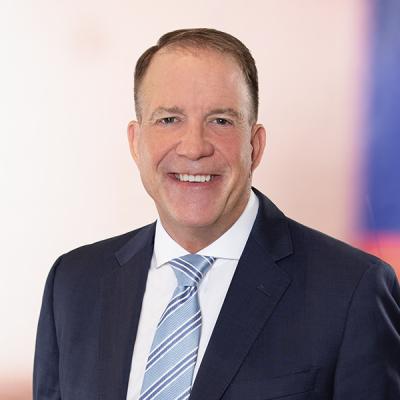New Opportunities from DOE for Advanced Batteries
Funding Opportunity Continues Rollout of Bipartisan Infrastructure Law
Continuing the rollout and implementation of the Bipartisan Infrastructure Law (BIL), and in support of the Biden administration’s goals of a fully carbon pollution–free electricity sector by 2035 and a net-zero economy by 2050, the US Department of Energy’s (DOE) Office of Manufacturing and Energy Supply Chains (MESC) recently announced a new funding opportunity announcement (FOA) to support the production of advanced batteries and battery materials, largely for use in electric vehicles, electric grid energy storage applications, or both.
With up to $3.5 billion available, the Battery Materials Processing and Battery Manufacturing Grants will support facilities used for “battery-grade processed critical minerals, battery precursor materials, battery components, and cell and pack manufacturing” at new, retrofitted, and expanded domestic facilities.
Interested parties must submit concept papers of no more than seven pages by January 9, 2024.
This new funding opportunity follows an earlier opportunity that awarded $2.8 billion to expand domestic manufacturing of batteries for electric vehicles (EVs) and the electrical grid and for materials and components currently imported from other countries.
MESC anticipates awarding between 19 – 41 awards under this opportunity, with award amounts ranging from $50 million to $300 million. Approved projects must include a cost share of no less than 50% of the total project cost, with the applicant’s cost share coming from private capital. Selected projects will run from 24 months to 60 months. All work for projects selected under this FOA must be performed in the United States.
FOA Incudes a Wide Range of Topic Areas
The FOA’s eight areas of interest (AOI) are broken out into two categories:
AOIs 1–3 focus on commercial scale domestic separation of battery materials from extracted feedstocks for battery-grade materials.
- AOI 1: Commercial-scale Lithium Separation from Domestic Sources
- AOI 2: Commercial-scale Lithium Separation, Processing, and Recovery of Battery Critical Minerals (non-Lithium)
- AOI 3: Commercial-scale Domestic Production of Crucial Precursors for Battery Manufacturing
AOIs 4–8 focus on commercial-scale battery cell, cathode, separator, and silicon-based anode production facilities and demonstration manufacturing facilities for new manufacturing processes or techniques.
- AOI 4: Commercial-scale Domestic Manufacturing of Battery Cathode and Anode Materials and Electrodes
- AOI 5: Commercial-scale Domestic Production of Electrolyte Salts and Electrolyte Solvent Manufacturing
- AOI 6: Commercial-scale Domestic Production of Cell Manufacturing for Specialized and Small Markets
- AOI 7: Commercial-scale Domestic Production of High-Capacity, Rechargeable Non-Lithium Based Battery Cell and Systems
- AOI 8: Commercial-scale Domestic Manufacturing of Other Battery Cell and Systems Components (Open Topic)
Take Note of Eligibility Requirements & Deadlines
Eligible applicants include individuals who are US citizens and permanent lawful residents, and domestic entities, including institutions of higher education, national laboratories, nonprofit and for-profit entities, state and local governments, and consortia of these entities. Foreign entities are eligible to participate in limited circumstances but require a waiver from DOE to do so.
Multiple concept papers from an entity are allowed, provided that each application describes a unique, scientifically distinct project.
Successful applications will include a Community Benefits Plan (CBP), which will account for 20 percent of the technical merit review of proposals and will be evaluated on (1) engaging communities and labor; (2) creating and retaining good quality jobs to attract and retain a skilled workforce; (3) advancing diversity, equity, inclusion, and accessibility pertaining to economic opportunity, including investing in equitable workforce development to prepare and connect people to these jobs; and (4) implementing the President’s Justice40 Initiative, including prioritizing work opportunities for workers of low and moderate income, rural communities, as well as coal, oil and gas, and powerplant communities. These “energy communities” are defined in President Biden’s Executive Order 14008.
As mentioned above, seven-page concept papers are due January 9, 2024, detailing technology innovation and impact, financial stability/business viability and commercial market viability, project team and approach, and a community benefits plan. For projects encouraged to submit a full application, there is a deadline of March 19, 2024.
Those interested in joining as teaming partners with other applicants can identify themselves on the Teaming Partner List.
What’s Different This Time Around?
As mentioned above, this is the second round of grants offered by MESC for Battery Materials Processing and Battery Manufacturing. The announcement for the first round was released in May 2022, with the awardee names released in October 2022. DOE’s current announcement indicates that awardee notifications will not be made until August 2024, indicating a significantly longer timeline for this round. This may be due to a larger number of applicants expected. It may also indicate that greater time is needed to thoroughly vet each applicant for adverse foreign national participation. DOE’s procedures for this were only put in place in April 2023 and were, to some degree, a result of the significant backlash the department received for making an award to Microvast after the company’s subsidiary in China became known. DOE eventually canceled the $200 million award over protests that the US investment could benefit the Chinese government. With very specific guidance provided in the current FOA, applicants will want to be sure that any foreign investment or operation is thoroughly disclosed and addressed.
In contrast to the first FOA, DOE is positioning this round as a rolling window of application opportunities, with potentially four windows in total available. The next round is scheduled to open in September 2024. This unique structure indicates that not all the funding will be awarded in the current FOA. While not stated, this may mean that applicants that are not successful in the current round can be reconsidered if they address their weaknesses. The remaining two rounds are expected to open in April 2025 and October 2025.
Outside of the multiple windows, this is likely one of the last remaining BIL funding opportunities for advanced batteries, but funding for battery manufacturing and materials processing is expected to still be available through DOE’s Loan Programs Office (LPO). The US Department of Defense (DoD) has also indicated an interest in funding advanced batteries and related material manufacturing. Coordinating these and other programs will be the responsibility of Abigail Wulf, who was recently named to lead the Biden-Harris administration’s American Battery Materials Initiative, a new effort to mobilize resources across the government to secure US supply of critical minerals used for power, electricity, and electric vehicles.
Another key difference for this round is that DOE is much more specific within the AOIs, as listed above, about what will be considered for funding under the FOA. This structure certainly highlights the DOE’s diverse interests through this FOA and may be helpful to companies that feel that they were lost in the crowd in the first round of battery funding.
Related to this, it will be interesting to see to what degree the program incorporates greater levels of technical innovation and risk. Technical Innovation and Technology Impact are added factors under the Technical Review Criteria for this FOA, which is weighted 30%. This may be, to some degree, a response to the recent letter from Senators Manchin and Warner for DOE to look beyond conventional lithium-ion batteries in the next round of FOAs and consider greater support for public-private pilot-line manufacturing facilities, focusing on innovative technologies. Coordination with the Department of Defense was also encouraged. Taken together, this indicates that there could be a diverse number of applicants and eventual awardees through this program.


